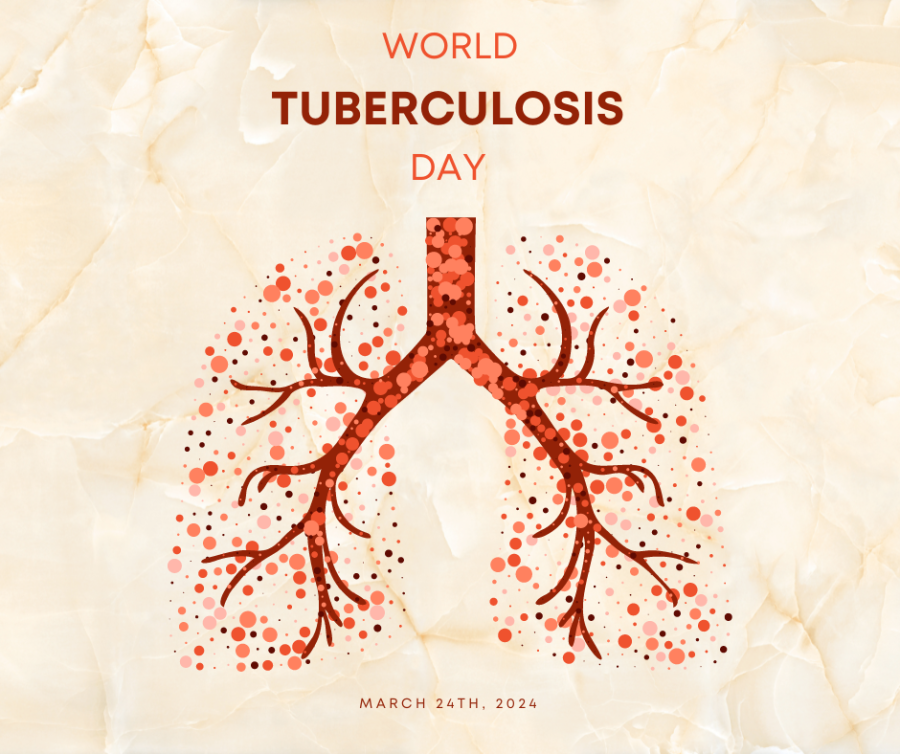Breathe Easy: Unlocking Insights for Tuberculosis Awareness
March 24th was World Tuberculosis Day – a day devoted to spreading awareness of the serious disease, Tuberculosis. Tuberculosis (or TB for short) is caused by the bacteria, Myobacterium tuberculosis. TB is spread through the air from person to person when an infected person coughs or speaks. For this reason, TB usually infects people’s lungs; however, it can also infect other parts of the body. While many people infected with TB don’t have any symptoms, those that do will often have serious symptoms including chest pain or coughing up blood and mucus. If someone is infected with TB but doesn’t have symptoms this is called a latent TB infection. Latent infections are important because they can still spread TB and it will eventually become an active TB infection. In honor of World Tuberculosis Day and to spread awareness, we decided to focus this week’s article on a recent study of TB.
The study1 was published in the journal BMC Public Health. Researchers looked at the TB infection trends in 209 countries around the world. The goal was to get a read on how much TB is spreading around the world and what the common risk factors are for TB outbreaks. They gathered data on the number of TB cases in each country from 2000 to 2021 and collected data on different features of each country, such as the poverty rate and rates of other diseases.
After analyzing these data, the researchers found a few interesting trends. The good news is that TB cases have declined around the world over the past 20 years. However, cases have been declining slowly, and there are still lots of regular TB cases around the world each year. The researchers conclude that at the current rate we will not meet the United Nation’s goal of eliminating TB by 2030. Nonetheless, the findings do suggest that TB will keep declining in years to come.
If we want to speed up the decline in TB cases to eventually eliminate the disease, we need to look at what puts countries at risk for more TB outbreaks. To do this, the researchers looked at which countries have more TB cases and which features set them apart from countries that have less. The researchers found that countries with more poverty and a lower literacy rate had more cases of TB than countries with a wealthier and more literate population. This is likely due to the fact that poorer and less literate countries have less resources in general to care for the health of their people. For example, an important part of preventing the spread of TB is rapid testing. However, if countries don’t have enough clinics that test for TB they won’t be able to catch TB cases quickly enough to treat people and prevent them from spreading the disease. In addition, when people have lower literacy, it means they lack access to quality education. When people lack access to education and the ability to read well it is much more difficult for them to learn where to get treatment when they feel sick. This in turn leads to more cases of TB going untreated and spreading to other people. Providing more education and building more clinics that treat TB will be an important step in eradicating the disease.
If you or someone you know has a bad cough that has lasted for 3 weeks or longer, has chest pain, or coughs up mucus with blood in it, go seek medical treatment. Bridgeport’s Family Health and Wellness Center offers testing and treatment for Tuberculosis.
Definitions
Myobacterium tuberculosis - A bacterium that causes tuberculosis (TB), a contagious infection primarily affecting the lungs but can also affect other parts of the body
latent infection – This occurs when someone is infected with Mycobacterium tuberculosis but does not show symptoms because the bacteria are dormant.
active infection – This occurs when Mycobacterium tuberculosis becomes active, causing symptoms such as coughing, fever, and weight loss.
risk factors – Conditions that can make an infection more likely or more severe, such as: contact with infected individuals, weakened immune system, overcrowded living conditions, healthcare settings exposure, age, substance abuse, and travel to high-incidence areas.
poverty rate – The percentage of the population living below the poverty line, indicating the proportion of people experiencing economic deprivation within a given area or population.
literacy rate - The percentage of the population aged 15 and above who can read and write. Higher literacy rates are associated with better health outcomes, including improved understanding of health information and engagement in preventive health practices.
Sources
- Bai W, Ameyaw EK. Global, regional and national trends in tuberculosis incidence and main risk factors: a study using data from 2000 to 2021. BMC Public Health. 2024;24(1):12. doi:10.1186/s12889-023-17495-6

